Infinite Jest: Dave Eggers on David Foster Wallace | reviews, news & interviews
Infinite Jest: Dave Eggers on David Foster Wallace
Infinite Jest: Dave Eggers on David Foster Wallace
One American author hails another, and we publish a gallery of new jacket designs to celebrate 40 years of Abacus
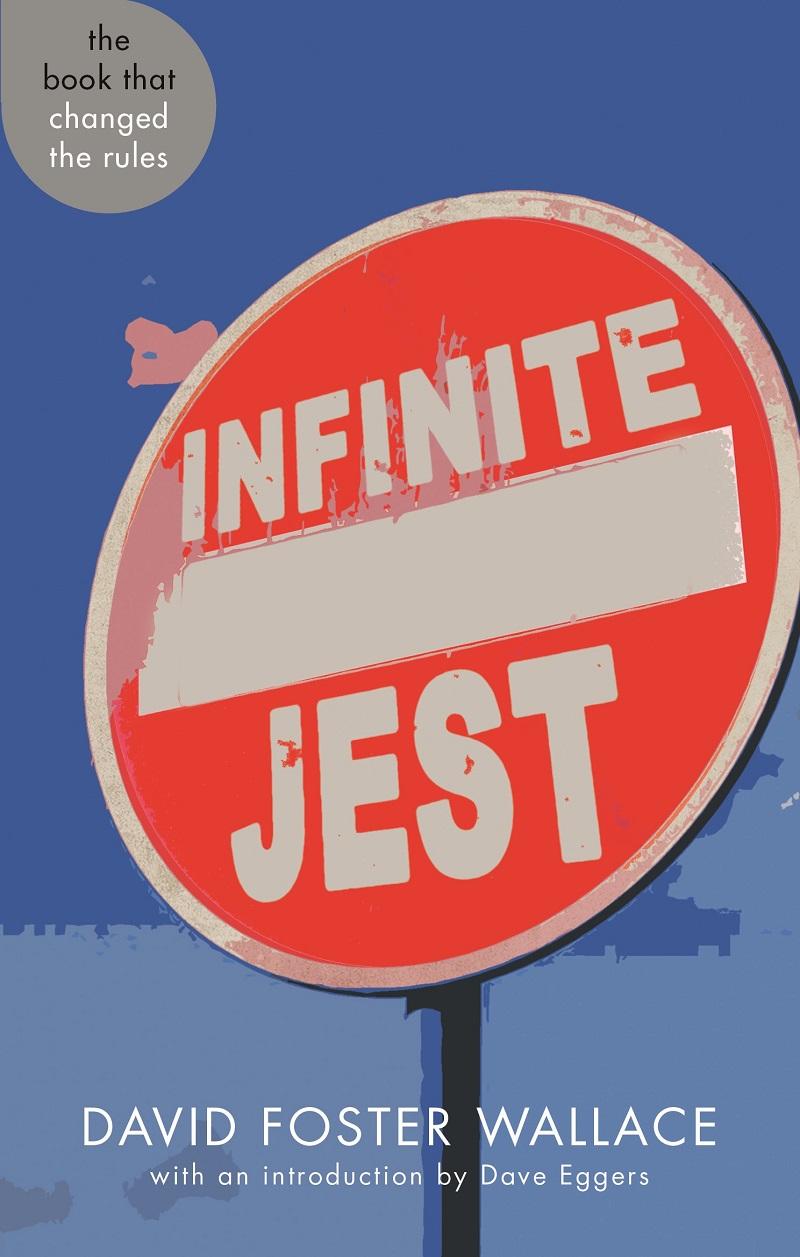
A new edition of David Foster Wallace's Infinite Jest, with an introduction by Dave Eggers, forms part of a series of classic reissues from Abacus. The publishing imprint this year reaches its 40th birthday, and to celebrate it is giving 18 books from its back catalogue a fresh lick of paint, each with a new jacket design and some with a new introduction.
They include monolithic memoirs by Primo Levi and Nelson Mandela, seminal British fiction from the likes of Beryl Bainbridge and Iain Banks, and significant works of contemporary American literature such as Infinite Jest and Candace Bushnell's Sex and the City. See a selection of the jacket designs in the gallery at the bottom of the piece. But first, enjoy Dave Eggers's brilliant introduction to Infinite Jest, written in 2006 two years before David Foster Wallace's untimely death at the age of 46.
In recent years, there have been a few literary dustups — how insane is it that such a thing exists in a world at war? — about readability in contemporary fiction. In essence, there are some people who feel that fiction should be easy to read, that it’s a popular medium that should communicate on a somewhat conversational wavelength. On the other hand, there are those who feel that fiction can be challenging, generally and thematically, and even on a sentence-by-sentence basis — that it’s okay if a person needs to work a bit while reading, for the rewards can be that much greater when one’s mind has been exercised and thus (presumably) expanded.
Much in the way that would-be civilised debates are polarised by extreme thinkers on either side, this debate has been made to seem like an either/or proposition, that the world has room for only one kind of fiction, and that the other kind should be banned and its proponents hunted down and, why not, dismembered.
That it was written in three years by a writer under 35 is very painful to think about
But while the polarisers have been going at it, there has existed a silent legion of readers, perhaps the majority of readers of literary fiction, who don’t mind a little of both. They believe, though not too vocally, that so-called difficult books can exist next to, can even rub bindings suggestively with, more welcoming fiction. These readers might actually read both kinds of fiction themselves, sometimes in the same week. There might even be — though it’s impossible to prove — readers who find it possible enjoy Thomas Pynchon one day, and Elmore Leonard the next. Or even: readers who can have fun with Jonathan Franzen in the morning while wrestling with William Gaddis at night.
David Foster Wallace has long straddled the worlds of difficult and not-as-difficult, with most readers agreeing that his essays are easier to read than his fiction, and his journalism most accessible of all. But while much of his work is challenging, his tone, in whatever form he’s exploring, is rigorously unpretentious. A Wallace reader gets the impression of being in a room with a very talkative and brilliant uncle or cousin, who, just when he’s about to push it too far, to try our patience with too much detail, has the good sense to throw in a good low-brow joke. Wallace, like many other writers who could be otherwise considered too smart for their own good — Bellow comes to mind — is, like Bellow, always aware of the reader, of the idea that books are essentially meant to entertain, and so almost unerringly balances his prose to suit. This had been Wallace’s hallmark for years before this book, of course. He was already known as a very smart and challenging and funny and preternaturally gifted writer when Infinite Jest was released in 1996, and thereafter his reputation included all the adjectives mentioned just now, and also this one: holy shit.
No, that isn’t an adjective in the strictest sense. But you get the idea. The book is 1,067 pages long and there is not one lazy sentence. The book is drum-tight and relentlessly smart and, though it does not wear its heart on its sleeve, it’s deeply felt and incredibly moving. That it was written in three years by a writer under 35 is very painful to think about. So let’s not think about that. The point is that it’s for all these reasons — acclaimed, daunting, not-lazy, drum-tight, very funny (we didn’t mention that yet but yes) — that you picked up this book. Now the question is this: Will you actually read it?
In commissioning this foreward, the publisher wanted a very brief and breezy essay that might convince a new reader of Infinite Jest that the book is approachable, effortless even — a barrel of monkeys’ worth of fun to read. Well. It’s easy to agree with the former, more difficult to advocate the latter. The book is approachable, yes, because it doesn’t include complex scientific or historical content, nor does it require any particular expertise or erudition. As verbose as it is, and as long as it is, it never wants to punish you for some knowledge you lack, nor does it want to send you to the dictionary every few pages. And yet, while it uses a familiar enough vocabulary, make no mistake that Infinite Jest is something other. That is, it bears little resemblance to anything before it, and comparisons to anything since are desperate and hollow. It appeared in 1996, sui generis, very different than virtually anything before it. It defied categorisation, and thwarted efforts to take it apart and explain it.
It’s possible, with most contemporary novels, for an astute reader, if they are wont, to break it down into its parts, to take it apart as one would a car or Ikea shelving unit. That is, let’s say a reader is a sort of mechanic. And let’s say this particular reader-mechanic has worked on lots of books, and after a few hundred contemporary novels, the mechanic feels like he can take apart just about any book and put it back together again. That is, the mechanic recognises the components of modern fiction, and can say, for example, I’ve seen this part before, so I know why it’s there and what it does. And this one, too — I recognize it. This part connects to this and performs this function. This one usually goes here, and does that. All of this is familiar enough. That’s no knock on the contemporary fiction that is recognisable and breakdown-able. This includes about 98 percent of the fiction we know and love.
 But this is not possible with Infinite Jest. This book is like a spaceship with no recognisable components, no rivets or bolts, no entry points, no way to take it apart. It is very shiny, and it has no discernible flaws. If you could somehow smash it into smaller pieces, there would certainly be no way to put it back together again. It simply is. Page by page, line by line, it is probably the strangest, most distinctive, and most involved work of fiction by an American in the last twenty years. At no time while reading Infinite Jest are you are unaware that this is a work of complete obsession, of a stretching of the mind of a young writer to the point of, we assume, near-madness.
But this is not possible with Infinite Jest. This book is like a spaceship with no recognisable components, no rivets or bolts, no entry points, no way to take it apart. It is very shiny, and it has no discernible flaws. If you could somehow smash it into smaller pieces, there would certainly be no way to put it back together again. It simply is. Page by page, line by line, it is probably the strangest, most distinctive, and most involved work of fiction by an American in the last twenty years. At no time while reading Infinite Jest are you are unaware that this is a work of complete obsession, of a stretching of the mind of a young writer to the point of, we assume, near-madness.
Which isn’t to say it’s madness in the way that Burroughs or even Fred Exley used a type of madness with which to create. Exley, like many writers of his generation and the few before it, drank to excess, and Burroughs ingested every controlled substance he could buy or borrow. But Wallace (pictured above) is a different sort of madman, one in full control of his tools, one who instead of teetering on the edge of this precipice or that, under the influence of drugs or alcohol, seems to be heading ever-inward, into the depths of memory and the relentless conjuring of a certain time and place in a way that evokes — it seems so wrong to type this name but then again, so right! — Marcel Proust. There is the same sort of obsessiveness, the same incredible precision and focus, and the same sense that the writer wanted (and arguably succeeds at) nailing the consciousness of an age.
It can’t be read at a crowded café, or with a child on one’s lap
Let’s talk about age, the more pedestrian meaning of the word. It’s to be expected that the average age of the new Infinite Jest reader would be about 25. There are certainly many collegians among you, probably, and there may be an equal number of 30-year-olds or 50-year-olds who have for whatever reason reached a point in their lives where they have determined themselves finally ready to tackle the book, which this or that friend has urged upon them. The point is that the average age is appropriate enough. I was 25 myself when I first read it. I had known it was coming for about a year, because the publisher, Little Brown, had been very clever about building anticipation for it, with once-monthly postcards, bearing teasing phrases and hints, sent to every media outlet in the country. When the book was finally released, I started in on it almost immediately.
And thus I spent a month of my young life. I did little else. And I can’t say it was always a barrel of monkeys. It was occasionally trying. It demands your full attention. It can’t be read at a crowded café, or with a child on one’s lap. It was frustrating that the footnotes were at the end of the book, rather than on the bottom of the page, as they had been in Wallace’s essays and journalism. There were times, reading a very exhaustive account of a tennis match, say, when I thought, well, okay. I like tennis as much as the next guy, but enough already.
And yet the time spent in this book, in this world of language, is absolutely rewarded. When you exit these pages after that month of reading, you are a better person. It’s insane, but also hard to deny. Your brain is stronger because it’s been given a month-long workout, and more importantly, your heart is sturdier, for there has scarcely been written a more moving account of desperation, depression, addiction, generational stasis and yearning, or the obsession with human expectations, with artistic and athletic and intellectual possibility. The themes here are big, and the emotions (guarded as they are) are very real, and the cumulative effect of the book is, you could say, seismic. It would be very unlikely that you would find a reader who, after finishing the book, would shrug and say, “Eh.”
Here’s a question once posed to me, by a large baseball cap-wearing English major at a medium-sized western college: is it our duty to read Infinite Jest? This is a good question, and one that many people, particularly literary-minded people, ask themselves. The answer is: maybe. Sort of. Probably, in some way. If we think it’s our duty to read this book, it’s because we’re interested in genius. We’re interested in epic writerly ambition. We’re fascinated with what can be made by a person with enough time and focus and caffeine and, in Wallace’s case, chewing tobacco. If we are drawn to Infinite Jest, we’re also drawn to the Magnetic Fields’ 69 Songs, for which Stephin Merritt wrote that many songs, all of them about love, in about two years. And we’re drawn to the 10,000 paintings of folk artist Howard Finster. Or the work of Sufjan Stevens, who is on a mission to create an album about each state in the union. He’s currently at State No 2, but if he finishes that, it will approach what Wallace did with the book in your hands. The point is that if we are interested with human possibility, and we are able to cheer each other onto leaps in science and athletics and art and thought, we must admire the work that our peers have managed to create. We have an obligation, to ourselves, chiefly, to see what a brain, and particularly a brain like our own — that is, using the same effluvium we, too, swim through — is capable of. It’s why we watch Shoah, or visit the unending scroll on which Jack Kerouac wrote (in a fever of days) On the Road, or William T. Vollmann’s 3,300-page Rising Up and Rising Down, or Michael Apted’s 7 Up, 28 Up, 42 Up series of films, or ... Well, the list goes on.
And now, unfortunately, we’re back to the impression that this book is daunting. Which it isn’t, really. It’s long, but there are pleasures everywhere. There is humour everywhere. There is also a very quiet but very sturdy and constant tragic undercurrent that concerns a people who are completely lost, who are lost within their families and lost within their nation, and lost within their time, and who only want some sort of direction or purpose or sense of community or love. Which is, after all and conveniently enough for the end of this introduction, what an author is seeking when he sets out to write a book — any book, but particularly a book like this, a book that gives so much, that required such sacrifice and dedication. Who would do such a thing if not for want of connection and thus of love?
Last thing: in attempting to convince you to buy this book, or check it out of your library, it’s useful to tell you that the author is a normal person. Dave Wallace — and he is commonly known as such — keeps big sloppy dogs and has never dressed them in taffeta or made them wear raincoats. He has complained often about sweating too much when he gives public readings, so much so that he wears a bandana to keep the perspiration from soaking the pages below him. He was once a nationally ranked tennis player, and he cares about good government. He is from the Midwest — east-central Illinois, to be specific, which is an intensely normal part of the country (not far, in fact, from a city, no joke, named Normal). So he is normal, and regular, and ordinary, and this is his extraordinary, and irregular, and not-normal achievement, a thing that will outlast him and you and me, but will help future people understand us — how we felt, how we lived, what we gave to each other and why.
Click on the images below to enlarge
Explore topics
Share this article
Add comment
The future of Arts Journalism
You can stop theartsdesk.com closing!
We urgently need financing to survive. Our fundraising drive has thus far raised £49,000 but we need to reach £100,000 or we will be forced to close. Please contribute here: https://gofund.me/c3f6033d
And if you can forward this information to anyone who might assist, we’d be grateful.

Subscribe to theartsdesk.com
Thank you for continuing to read our work on theartsdesk.com. For unlimited access to every article in its entirety, including our archive of more than 15,000 pieces, we're asking for £5 per month or £40 per year. We feel it's a very good deal, and hope you do too.
To take a subscription now simply click here.
And if you're looking for that extra gift for a friend or family member, why not treat them to a theartsdesk.com gift subscription?
more
 'We are bowled over!' Thank you for your messages of love and support
Much-appreciated words of commendation from readers and the cultural community
'We are bowled over!' Thank you for your messages of love and support
Much-appreciated words of commendation from readers and the cultural community
 Slow Horses, Series 5, Apple TV+ review - terror, trauma and impeccable comic timing
Jackson Lamb's band of MI5 misfits continues to fascinate and amuse
Slow Horses, Series 5, Apple TV+ review - terror, trauma and impeccable comic timing
Jackson Lamb's band of MI5 misfits continues to fascinate and amuse
 Kohout, Spence, Braun, Manchester Camerata, Huth, RNCM, Manchester review - joy, insight, imagination and unanimity
Celebration of the past with stars of the future at the Royal Northern College
Kohout, Spence, Braun, Manchester Camerata, Huth, RNCM, Manchester review - joy, insight, imagination and unanimity
Celebration of the past with stars of the future at the Royal Northern College
 Album: Night Tapes - portals//polarities
Estonian-voiced, London-based electro-popsters debut album marks them as one to watch for
Album: Night Tapes - portals//polarities
Estonian-voiced, London-based electro-popsters debut album marks them as one to watch for
 Coldwater, ITV1 review - horror and black comedy in the Highlands
Superb cast lights up David Ireland's cunning thriller
Coldwater, ITV1 review - horror and black comedy in the Highlands
Superb cast lights up David Ireland's cunning thriller
 Kerry Godliman, G-Live review - she's livid but delivers the laughs
Perimenopause provides rich seam of gags
Kerry Godliman, G-Live review - she's livid but delivers the laughs
Perimenopause provides rich seam of gags
 Mark Hussey: Mrs Dalloway - Biography of a Novel review - echoes across crises
On the centenary of the work's publication an insightful book shows its prescience
Mark Hussey: Mrs Dalloway - Biography of a Novel review - echoes across crises
On the centenary of the work's publication an insightful book shows its prescience
 Jansen, LSO, Pappano, Barbican review - profound and bracing emotional workouts
Great soloist, conductor and orchestra take Britten and Shostakovich to the edge
Jansen, LSO, Pappano, Barbican review - profound and bracing emotional workouts
Great soloist, conductor and orchestra take Britten and Shostakovich to the edge
 The Weir, Harold Pinter Theatre review - evasive fantasy, bleak truth and possible community
Three outstanding performances in Conor McPherson’s atmospheric five-hander
The Weir, Harold Pinter Theatre review - evasive fantasy, bleak truth and possible community
Three outstanding performances in Conor McPherson’s atmospheric five-hander
 Jakub Hrůša and Friends in Concert, Royal Opera review - fleshcreep in two uneven halves
Bartók kept short, and a sprawling Dvořák choral ballad done as well as it could be
Jakub Hrůša and Friends in Concert, Royal Opera review - fleshcreep in two uneven halves
Bartók kept short, and a sprawling Dvořák choral ballad done as well as it could be
 Hadelich, BBC Philharmonic, Storgårds, Bridgewater Hall, Manchester review - youth, fate and pain
Prokofiev in the hands of a fine violinist has surely never sounded better
Hadelich, BBC Philharmonic, Storgårds, Bridgewater Hall, Manchester review - youth, fate and pain
Prokofiev in the hands of a fine violinist has surely never sounded better
 Album: Mulatu Astatke - Mulatu Plays Mulatu
An album full of life, coinciding with a 'farewell tour'
Album: Mulatu Astatke - Mulatu Plays Mulatu
An album full of life, coinciding with a 'farewell tour'



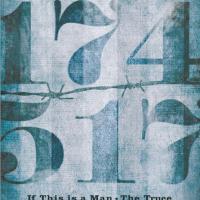
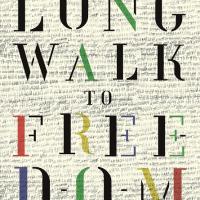
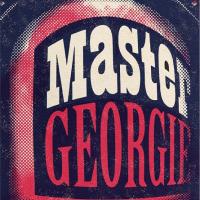



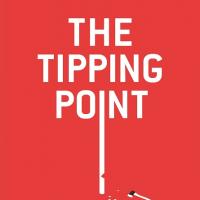


Comments
this introduction is
this introduction is identical to those in previous versions..